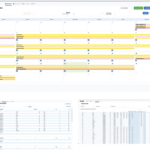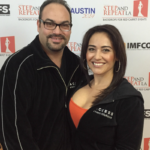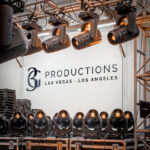Mark Dodd Provides a Look at the Company’s Latest Products
Once again, Tyler Truss Systems (TTS) is leading the way by introducing new structures applicable to the live entertainment industry. With LED products revolutionizing the lighting and video industries, Mark Dodd, president and founder of TTS and Dodd Technologies, realized the time had come to apply the Tyler GT Truss concept to this particular market.
These latest concepts have been developed using the same thought processes that launched TTS in 2004. “Our philosophy was to look at designs and think about how we can make them work better,” Dodd says. “Structure is structure, we get that. There are certain things that need to be improved in how the structure goes together, how it is transported, how fixtures mount within the structure. All of these details are important to look at for improvement.”

Focusing on Unmet Needs
Back then, Dodd saw that although a lot of quality structural products were manufactured, the product lines were limited in their scope. That is the same problem he encountered when looking at the LED market. He notes that the question the people at Tyler ask themselves is, “What is the problem that hasn’t yet been solved?”
This type of thinking is what originally led to Tyler Truss’ GT product line. “The GT (originally named HUD) truss was really an effort that got started when Upstaging approached us and suggested a collaboration on a new truss idea. Over the next several months, and seemingly endless visits back and forth with prototypes, the truss was born. With their touring and trucking expertise, Upstaging was instrumental in the final product design and was one of our biggest advocates.”
Once the benefits of how it works came to light, it didn’t take long for designers to go, “This makes a lot of sense,” Dodd points out. The GT in Tyler GT stands for Green Truss, because of the efficiencies in space, weight and time, both on the stage and in the truck. In trucking, that amounts to a smaller carbon footprint and a ton of money to the bottom line.
Tyler GT pre-rig truss is designed primarily for automated fixtures, which can be pre-loaded in the shop, with cabling laid in place. TTS is one of the most ardent supporters of the center backbone concept. They build truss with the center backbone, like the GT, Centerline Truss and LED truss so the fixtures hang on a center chord rather than on the upstage or downstage chords. This provides for a more balanced load and a safer hang.

Solving Production Problems
Dodd adds that a big advantage he has as a manufacturer is the wealth of knowledge his guys bring to the truss side of the business from their production backgrounds. “They are always looking at all of the little things, like the location, space for connectors, spacing of diagonals so you can see the displays on fixtures. We take all that into account in the designs that we do.”
A new truss product, still unnamed at presstime, has been specifically designed for the LED market. It is a spigot-coupled 16” x16” truss, built in metric lengths. The center chord for hanging the load is located inside the truss itself, at a height that hides the LED’s header bar and hanging points. This places the top of the LED tiles right at the bottom chord. The center chord runs end to end of the truss, providing a continuous line for a seamless hang of LEDs, be they tiles or battens, such as Elation Chorus Line 16’s, one truss to the next.
Tyler also offers a product designed for use with LED display panels — ground supported triangle truss with a ladder built into the backside. Mounted on a base plate, the truss provides a strong enough backbone to go five meters high and still be serviceable via the ladder for quick access to work on the panels. Dodd Technologies’ production crew recently used this truss for a 5m high x 25m long ground supported LED wall on the World Swimming Organization (FINA) Junior World Finals. “It worked like a million bucks,” Dodd says.
Another piece Tyler is introducing at LDI is a patent-pending, moisture-proof lift block for chain hoists. “We did some prototyping of this on a show that was outdoors continuously for 20 months,” says Dodd. “Motors would normally never withstand that continuous outdoor exposure, yet these have done over 8,000 cycles,” and, he says, they are still “good as new.” Their patented indexable fork end has four-pin inserts, allowing for an indexable gated corner, as well as a changeable insert to create angles in the corners themselves.

An Emphasis on Quality
“As a businessman, I understand that I could substantially grow Tyler very rapidly, but I want the quality and dependability to come first,” Dodd says. “As we continue to grow, I want to make sure that our promises are kept to our clients. We also ask our customers ‘Give us the problems to solve, because that is what we are good at.’”
Dodd saw evidence of how this approach to business is paying off while talking with techs supporting a show at Klipsch Music Center in Noblesville, IN. “The guys told me the entire summer went by, and there were maybe two shows that didn’t have Tyler GT truss on it. They’re just as proud as my guys are, about this locally manufactured product here in the Midwest.
“I feel very fortunate to have a bunch of hard working, talented guys,” continues Dodd. “They get it. They understand about delivery, they understand about quality. We get calls from a major production company or a tour that needs us to move heaven and earth to get their product to them. We understand the industry business model sometimes does not allow companies the time they would really need to prep things. As a supplier, we stay conscious of that and respond to their needs.”
For more information on Tyler Truss and Dodd Technologies, please visit www.tylertruss.com and www.doddtechnologies.com .


